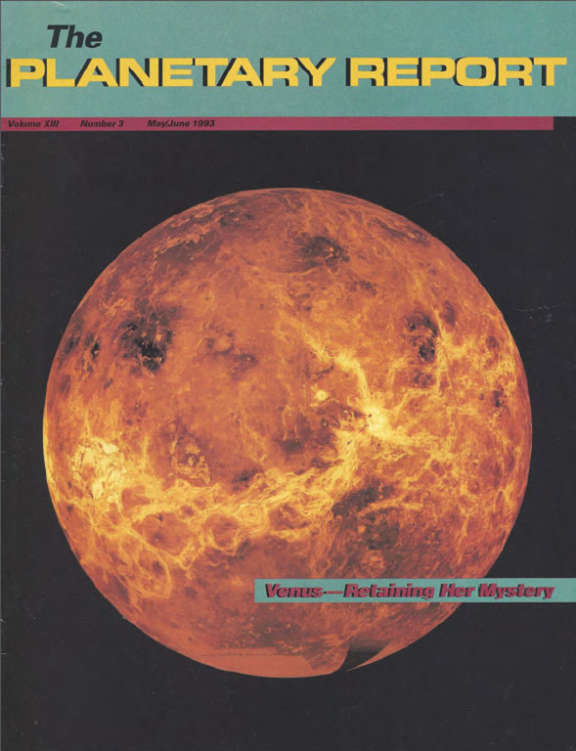The Planetary Report • May/June 1993
Venus—Retaining Her Mystery
On the Cover: Venus as seen through a telescope is a fuzzy yellow planet completely enshrouded by sulfuric acid clouds. Only with radar can we penetrate the thick, obscuring layers to discern surface features. Earth-based radars, the <i>Pioneer</i> Venus orbiter and <i>Veneras 15</i> and <i>16</i> all helped to reveal Venus' surface, but couldn't match the detail of <i>Magellan</i>'s observations. This global view was created from data gathered by <i>Magellan</i>. Areas missed were filled with coarser <i>Pioneer</i> data, and the colors were based on data returned by the <i>Venera 13</i> and <i>14</i> landers.
Features
4 Venus: After Magellan, She Still Has Her Mysteries: R. Stephen Saunders details the findings of this mission, and the questions it has revealed.
10 A Hopeful Gathering of Planetary Scientists: James Burke reports on a NASA meeting to review more than 70 concept Discovery mission proposals.
13 Bringing People Together Through Planetary Science: Adriana Ocampo and Rosaly Lopes-Gautier discuss a UN-ESA program to help bring space science to developing countries.
Departments
3 Members' Dialogue Human missions to Mars.
16 Readers' Service Conversing With the Planets.
17 World Watch Russian Mars rover and Mars '94.
18 News & Reviews Why Venus died; are Jupiters rare?
19 Society Notes Upcoming events.
20 Q&A How did water arrive (or form) on Earth, and when?
The Planetary Report • May/June 1993
Help advance space science and exploration! Become a member of The Planetary Society and you'll receive the full PDF and print versions of The Planetary Report.


 Explore Worlds
Explore Worlds Find Life
Find Life Defend Earth
Defend Earth


